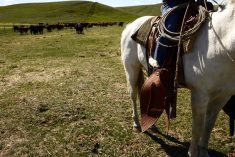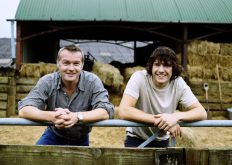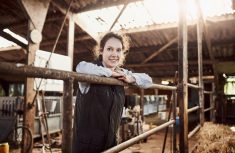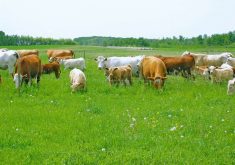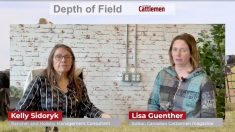Human resources is about “building systems and processes that keep the operation running, fostering a positive work environment and preparing for the unexpected,” says Viktoria Schuler, a project manager with the Canadian Agricultural Human Resource Council. Schuler was speaking at a virtual Farm Credit Canada (FCC) Connecting Women in Agriculture session on human resource management on the farm.
The textbook definition of HR management is having the right people with the right skills at the right time to create the right environment that enables and motivates people to do the right thing. Like an iceberg, there is a small amount above the surface in HR that people see, with a much larger section below that people do not see. “Those hidden aspects can take a great deal of resources, time and energy,” she stresses. “The benefits of effective HR are improved productivity, strengthened family relationships through building trust and lower employee turnover.”
Read Also

Building demand together: The impact of Canada’s beef import levy
The beef import levy has become a central tool for ensuring balance in Canada’s beef industry
An area she sees that requires attention, particularly for farming and ranching families, is that of work-life balance. Or is there such a thing? Kailin Kitzan with Do More Ag suggests we should think of it as “work-life sway.” There are times on the farm when it is going to be difficult to achieve balance.
- More ‘Depth of Field’: Strategic planning, ‘natural laws’ of mindset and decision-making
- More ‘Depth of Field’: Looking at change and authenticity on the ranch
This may be an area that is viewed differently between the generations. Schuler recommends strategies to improve it such as flexible work schedules, breaks, time-off policies, creating “no-work zones” and valuing personal time.
The workload distribution and differing perspectives on this should be addressed. A regular communication approach with feedback is helpful to incorporate, as well as role descriptions.
“Clarity is power and can foster respect, understanding and teamwork.” Another aspect to consider is conflict management. “Addressing issues head on is critical and may require training and mediation,” says Schuler.
HR practices need to align with the long-term vision of the operation and family. Formal feedback mechanisms can include regular performance reviews. Schuler recommends the sandwich approach with positive feedback first, then constructive and finishing with positive.
Another tool is the 360-degree review, which includes insights from all directions and can help identify blind spots. It does take work to become comfortable sharing constructive feedback. Remember, it takes practice to strengthen muscles and improve skills.
Schuler suggests creating basic work agreements specifically for your operation. Treat them as “living” documents that will be continuously updated and revised.
And of course, this links to the succession plan. “Farms without a succession plan are 50 per cent more likely to dissolve with the next generation. It is vital to preserving the farm’s legacy and relationships,” she says. From many sources, the importance of an aligned vision comes up repeatedly.
In a subsequent session of the FCC series, Annessa Good-Hassard with Peak Heritage Consulting Ltd. focused on succession/transition planning.
“So much of the succession planning process seems to rest on the shoulders of the women. Or at least, they feel like it does,” says Good-Hassard.
She compares farm family business transition planning to riding a roller coaster.
“Unspoken expectations are silent killers,” she adds. “It is important that we are proactive rather than reactive. Remember, the business and estate plan are dependent on one another.”
Good-Hassard recommends having an “emergency will” as part of a contingency plan. What if someone is gone tomorrow? This also links with asking your accountant what exactly your current tax situation is if a crisis happened. That can be one way to kick-start the process. A fear tactic, but if it works…
“Perception is reality, facts are negotiable,” is an oft-used phrase of hers. Sometimes she suggests leaning on the math to help alleviate some of the emotions. Of course, that cannot replace them.
Land and its value set ag transition apart from that of other family businesses. Good-Hassard finds the compensation piece important to address. She considers compensation to include wages/salary, management fees, ROI, redemption of equity and rent on personally owned land. This needs to be looked at for both generations and in considering possibilities down the road.
The business plan and estate plan are linked. We need to determine “how to be efficient and effective with the same base, keeping operations viable and sustainable,” she says.
In the estate planning, consider the 6 Ds: divorce, death, departure, disease, debt and disagreement.
She stresses the importance of granting ourselves and each other grace. The process is complex, and it does take time. She reminds women that you can have it all, but you cannot do it all.
“One of our superpowers is connection,” she says. “Embrace that strength.”
Canadian Agricultural Human Resource Council and FCC have several tools and templates on their websites.
– Kelly Sidoryk ranches with her family just west of Lloydminster, Alta. She consults in several areas including succession planning and holistic management.


